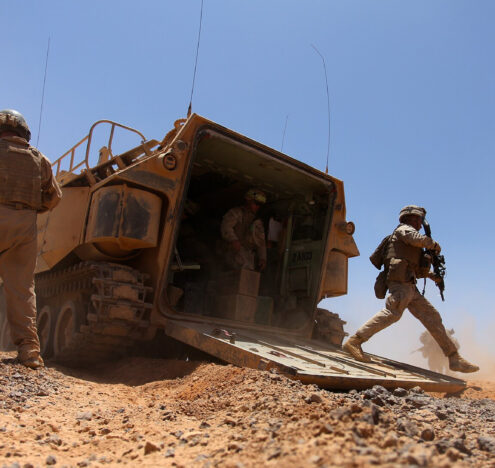This analysis was featured in Critical State, a weekly newsletter from Inkstick Media and The World. Subscribe here.
When people play games, they learn not just the rules of play, but how to operate in a world structured by those rules. As gaming has moved from Pentagon-run simulations or RAND-imagined scenarios, it has allowed people to experience a wider range of actions. Players are no longer confined to the roles of commanders or generals, as in strategic simulation, but are participants in virtual worlds, ones that shape who they are as people.
In “Wargames Resurgent: The Hyperrealities of Military Gaming from Recruitment to Rehabilitation,” Aggie Hirst makes the case that International Relations should take the study of games seriously. This includes strategic games, which have long been studied, through ebbs and flows of scholarly interest, but also the games people play in their spare time, which inform how they understand the world and their role in it.
In her article, Hirst examines four different ways the US military and people within it use gaming.
“Since 2014, a gaming renaissance has been underway across the US defense establishment. From simple card and counter games to augmented/virtual reality training systems, and from basic training to four-star command, today gaming is entrenched across the military’s strategic planning architecture, teaching and training regimes, and administrative infrastructure,” writes Hirst. “To date, IR has neglected to engage with this revival.”
Engaging with that revival means taking seriously what people do in games, how individuals and institutions use them, and what understanding of the world games instill in their players. To do this, Hirst conducted a total of 73 interviews between 2017 and 2019 with designers, instructors, trainees, and veterans across the then-four branches of the US military: the Army, Marine Corps, Air Force, and Navy. (Members of Space Force, a branch created in December 2019, were not included, as the branch did not exist when the study began.)
“This article argues that hyperreal games — that is, games that produce realities — play an increasingly important role in the attraction, production, management, and recovery of warfighters. The core argument developed is that unlike simulations, which model scenarios, games are productive of people, values, and identity,” writes Hirst.
In her article, Hirst examines four different ways the US military and people within it use gaming. Recruitment gaming is games as a tool for just that, from the military-produced America’s Army first-person shooter. Training with games involves tools specifically adapted for simulated battle, where a squad can run an exercise virtually before testing it out on the course, or where pilots can log time in virtual reality flight simulators when needed. Deployment gaming is the use by soldiers and others to play games in the dead time between action, bonding, and processing together. Finally, there’s rehabilitation gaming, where veterans and others turn to games to process feelings about war, and sometimes to regain skills like eye-hand coordination that were lost to combat.
Concludes Hirst, “IR and associated fields must now develop theories, concepts, methods, and research communities adequate not just to new realities of games but to the distinctive hyperrealities they produce.”




















